What Every Vintage Timex Enthusiast Needs to Know: Models, Movements, Features, Identification Guide, & More
In collaboration with Cameron Martel.
Greetings all and thank you for checking out my first article for WYCA. I am going to discuss the joy and frustration of vintage timepieces, specifically vintage Timex.
I am not a watch expert, nor am I a watchmaker. I am a regular guy with a passion for horology in every form. The reason I choose to dive into the vintage market is simple: I can afford to buy brand name mechanical movement watches at a fraction of their new counterparts. The interesting thing about vintage watches (of any brand) is their innate ability to not keep great time. Honestly, my old Casio G-Shock keeps much better time than a fully serviced vintage Omega.
So if it’s not about time it must be something else… I like watches, I like mechanical watches, and I like to collect, sell, and own these amazing old pieces.
Today, let’s discuss vintage Timex watches.

Great Old Watches That Take A Licking And… You All Know The Rest!
I first owned Timex like almost everyone my age (60) as a young boy and man. I received my first Timex when I was about 12-years old. It was a hand-winding model with a simple numeric dial. That’s all I can remember, and it’s amazing that it had an impact that I can remember 48-years later.
Now I’m buying and holding the best from that same era, and moving on the pieces I can make a profit from. 1960’s mechanical Timex both automatic (Self-Winding) or the manual winding models were built in Great Britain primarily. These are the pieces I search for everyday. It is pretty amazing that these $6 to $15 watches are still running well today, many without any servicing in their lifetime.
Wait, Timex Makes Automatics?
They sure do, and many of those movements are still available today on the vintage market. There are two movement numbers that I prefer and seek out, #31 and #32. These movements are workhorses in the vintage Timex market. There are other automatic movements, but I prefer these two because of my experience.
Be warned: these movements are not real pretty, they were mass produced, and have no jewels… but they are serviceable.
Many watchmakers snub you when you ask if they service Timex, but you can find talented craftsmen and women that will provide a Timex cleaning and oiling.
The pictures below are the #31 movement from one of my Viscount models. Additionally, the case back is stamped “Great Britain”, so you know that you found the highest quality Timex automatic movement and watch produced by the company in the 1960’s.
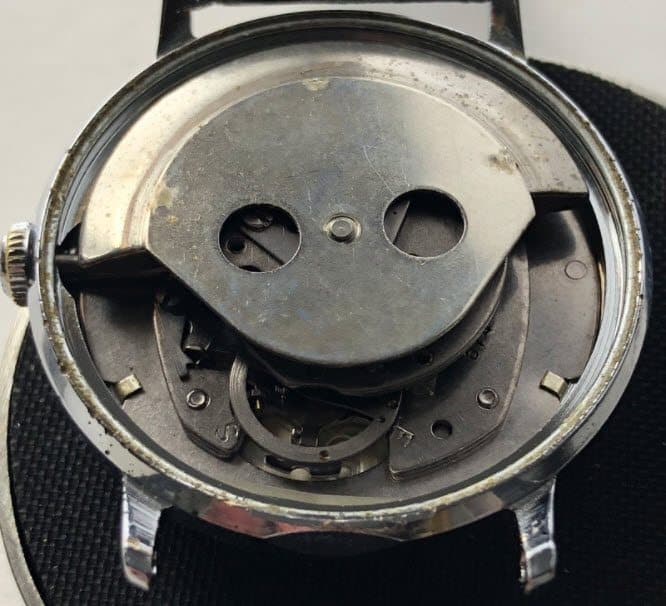
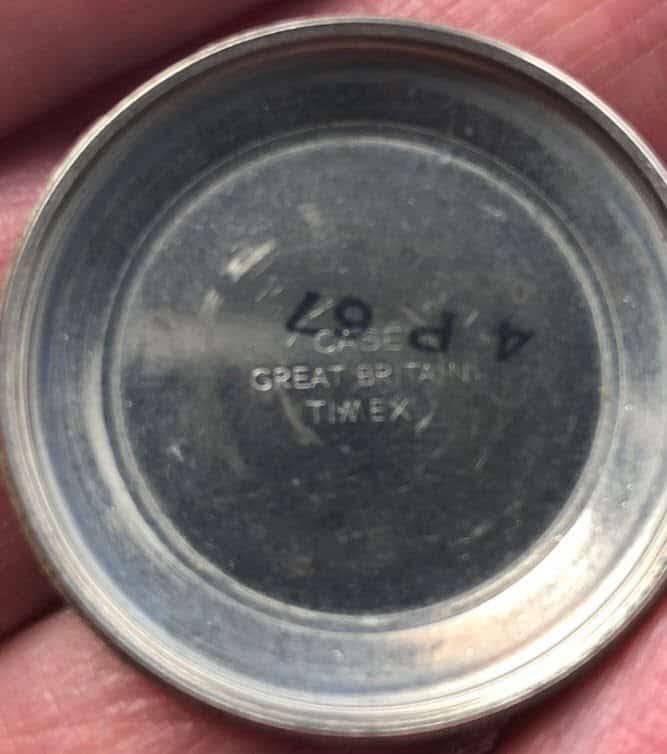
Notable Timex Automatic Movements
Again, I am going to focus on the 1960’s Timex models as they are the ones I have personal experience with. In the men’s watches, the automatic movements included the 29, 31 and 32 which were all used in the Viscount models, and the 72 which was the only “jeweled” movement in the entire brand was the heart of the “21 Jewel” line. It is clearly the most aesthetically pleasing movement.
Please remember that these opinions of Timex movements are not from a watchmaker’s perspective. There are thousands of people that are working on and collecting vintage Timex that are way more informed on this topic. This is merely my perspective as a collector and occasional watch flipper.
Movement 31 Automatic Mechanical
- The 31 started in 1961 and ran thru the 1970’s to the best of my knowledge
- The power reserve new was in the 24-hour range
- One of my serviced 31’s reserve was 24 hours as well
- Poorly maintained 31’s reserve can be anywhere from zero to 12-18 hours on a full wind
- These movements were primarily built in Great Britain, but I did have one from Portugal (should have kept that one!)
I believe this is the finest automatic movement in the brand at the time simply from the lack of complications (no day date) and the fact that these basically disposable watches are still running strong some 50+ years.
Movement 32 Automatic Mechanical
- The 32 came out in 1965 also running in the Viscount line
- It is based on movement 24 with added date complication from the 25
- It is a thinner movement and also automatic self-winding
- Power reserve new was 24 hours and a shorter reserve on vintage unserviced models
- The 32 was also built in Great Britain
The 32 is another solid self-winding movement and except for the date complication wheel getting dry and failing, it’s a great movement. I do shy away from unserviced Timex (most of them) with the date or day date. Problem is when you go to set these, if you set (wind, wind, wind) for any length of time the dry movement and wheels start slipping and ultimately make that complication fail. I actually mark the date on my personal calendar and start the watch back-up from sitting to get the date right. I know, a giant pain, but it’s the sacrifice we make with vintage unserviced watches.
Movement 107/108/109 Automatics
- Late-60s through late-70s
- 38-hour power reserve (when new)
- 18,000 bph
- M108 added date display
- M109 added day/date display
Be careful with the day and day/date models as they are prone to wear due to lack of service.
Hand-Wind Movements
The hand-wound mechanical movements are the heart of the Marlin line from Timex. It features a “V-Conic” bearing system and a rugged two plate design” (Timex Manual, 1969). Only three parts need to be removed once out of the case to do the recommended service. These are also workhorse movements that have stood the test of time admirably.
Movement 22 and 24 Hand-Wind Mechanical
- The 22 started in 1961
- 24 rolled out in 1964
- Replaced the 21 movement
- Rugged two plated design
- 42 hour reserve (when new)

Movement 72 and 74 Jeweled Automatic and Hand-Wound Mechanical
- Easily distinguishable from all other Timex movements
- Twenty-one jewels
- Top jewels are removable
- Delicate enhancements pronounce the movement
- My opinion, the most beautiful Timex movement
Desirable Vintage Timex Auto’s Worth Buying
There’s a lot out there, but when I’m shopping, I’m looking for a model of one of the series listed below. These are exclusively mechanical; if you’re into electric, there are a lot of vintage quartz’ out there…
Timex Marlin Series
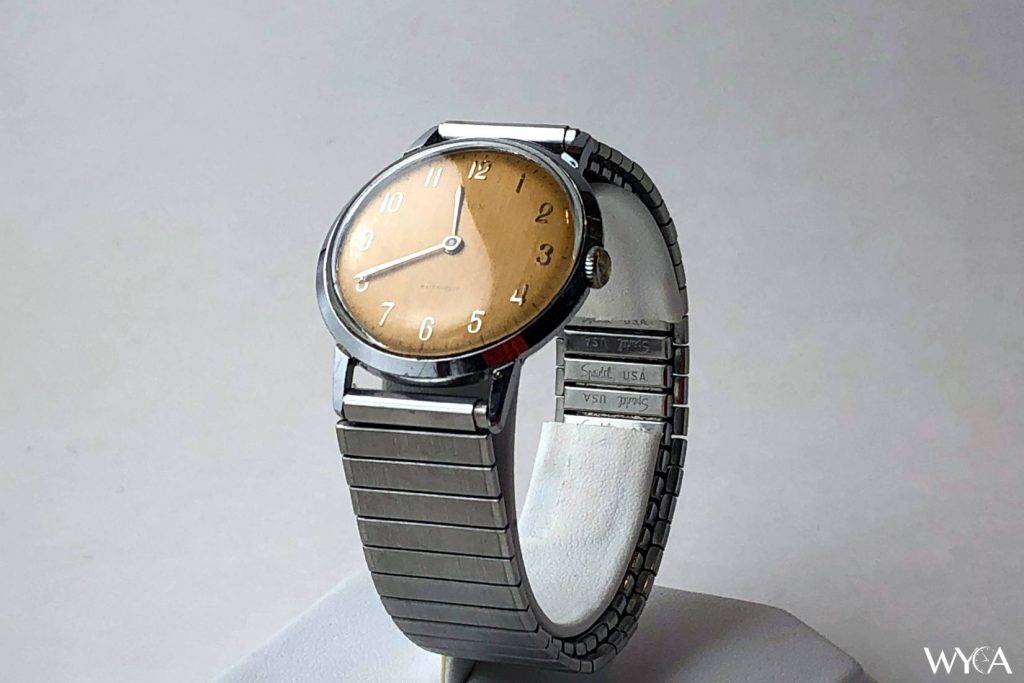
The Timex Marlin is the “king of the hill” in the Timex line due to durability, aesthetics, and the recent re-release of the model in 2017. It is highly desirable and the manually wound two plate movements are rock solid. This watch is also waterproof.
They were built thru the 60’s and 70’s and provide a great value to those looking to enter the vintage watch market at the $60 to $300 USD price range.
The best place to find them? eBay.
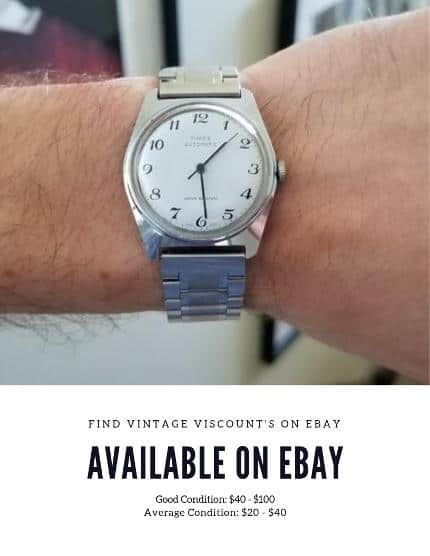
Timex 17 and 21 Series
The Timex 17 and 21 series is also another favorite with collectors, simply because it’s more of what a watch connoisseur would look for with a pretty movement and more advanced design. It has both a self-winding and automatic movements with a waterproof case (don’t trust this in any of the vintage watches) It’s dial selections are simple and elegant with various number combinations and even a dot-dash 12 only dial. This watch was produced from 1961 to 1965.
Timex Mercury Series
Truth be told, I do not know a great deal about the Mercury, but I have one on the way to my home as we speak. It was the first vintage Timex I purchased (wildly overpriced $82) before I learned a little more about the brand. I resold it for $62 unfortunately… They are fourth place in popularity of the top four models, but are beautiful in their own right. They sport a very simple two and three hand dials with the only variation being the numbering sequence on the dial.
Timex Viscount Series
Again, this is my personal favorite because of the automatic movement and the simple good looks. This watch has some attractive dial designs and is often called a Marlin by unscrupulous sellers. It was also produced thru the 60’s and 70’s and is a great automatic self-winding, waterproof watch for both the avid collector and those just entering the vintage watch market seeking a true automatic, for around $50 USD.
Timex Mercury Series
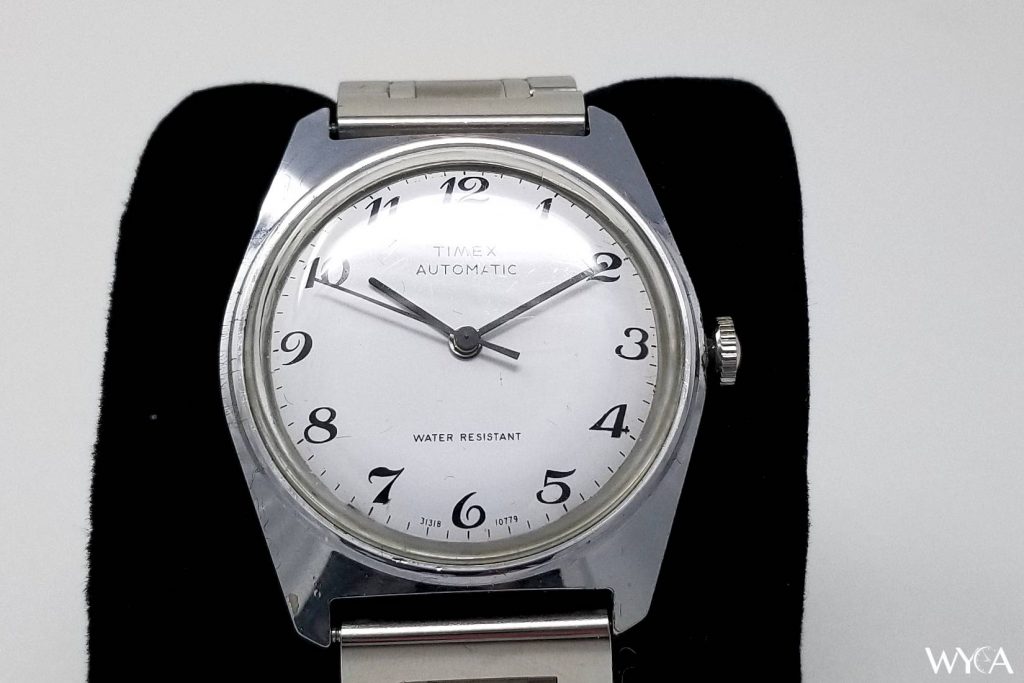
Truth be told, I do not know a great deal about the Mercury, but I have one on the way to my home as we speak. It was the first vintage Timex I purchased (wildly overpriced $82) before I learned a little more about the brand. I resold it for $62 unfortunately… They are fourth place in popularity of the top four models, but are beautiful in their own right. They sport a very simple two and three hand dials with the only variation being the numbering sequence on the dial.
Other Series
During the 1960’s there were other lines available, but I really know very little about. I’ll list them below in case you wish to research them further.
- Timex Electric
- Timex Monroe
- Timex Sportster
- Timex Sprite
- Timex Super Thin
- Timex Diver
- Timex Character
- Alice in Wonderland
- Cinderella
- Hopalong Cassidy
- Mickey Mouse
- Snow White
- Zorro
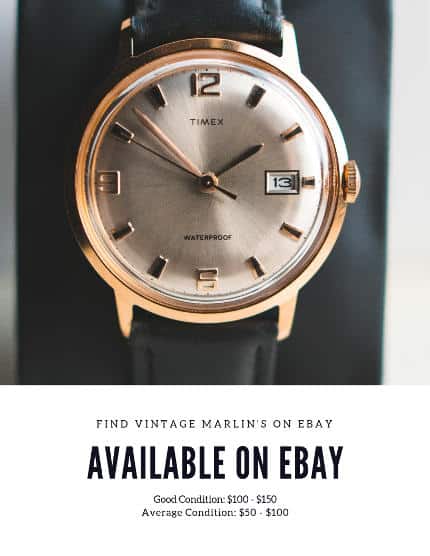
Preferred Models… Beware!
The models that I seek, and that have the highest value, are listed in the 1960’s Timex Service Manual (link below) as Marlin built in 1961 thru 1967 (reissued November of 2017).
Their 1960’s model numbers found on the base of the dial are either 2010, 2014, 2017, 2024, 2117, or 2124, with manual wind movements #22, 24, or 25. The reissue has driven the prices for the Marlin models way up, some in the $300 USD range. You can still find them for $25 USD to $100 USD if interested.
Here is the BIGGEST problem with buying a “Marlin” on virtually every online site: most of the time they are not Marlin’s; they are Viscounts, Mercury, 21 Jewel, or Monroe models. It frustrates me to see these watches being misrepresented and sold on the higher end of the scale. This happened to me in the first week I was buying vintage in large amounts. Tough lesson learned, and one I ask you not to make.
Pay attention to the model numbers. Another word trick I see is “Marlin Style” or “Marlin? Tell me if I’m wrong” (I do).
One of the worst ones, and this Viscount model sold for $150, was a lengthy explanation on “How the Viscount was the automatic Marlin.” It’s not, it is a completely separate model, and one that I actually prefer due to the self-winding automatic movement. So buyer beware when looking at a Timex Marlin.
Unique Dials & Features
Timex Electric
Another vintage line that you will see them for sale in the $6 to $250 range. They are not something I collect or wish to collect as I seek automatic or manual wind mechanical watches. That said, there are some beautiful examples if electric is your thing.
Crosshair Dials
One of the choices you will find in Timex vintage watches are crosshair dial’d versions- two-handed are a bit unusual, and often new owners think the second hand is missing! I prefer a second hand as I like the sweeping motion.
Day/Date Complications
These vintage Timexes are a nightmare in my humble opinion. If the watch is not serviced, these complications will fail miserably. Trying to set the day date feature requires excessive winding, and a dry movement will seize up. My first example is a beautiful “Tiger Eye” Timex. I sold this watch and was going to set the day/date for the new owner. I ruined the watch and lost out on an $80 sale. Take it from me, stay away from these pieces unless serviced.
Moonphase
An option on the “Retro Timex” from the 80’s and 90’s that I do not know much about, other then that they look cool!
Luminescence
Generally aged to the point of no value and does not function like new. This is not a big deal for vintage Timex enthusiasts as we don’t expect it to work. On occasion, you find a watch that has been “re-lumed” and purists hate them.
Digital Watches
Also in the “Retro” timeframe and not the watch for me. I am not sure why they don’t appeal to me as I was a budding adult in the 70’s. Some people love them, and to each their own!
Skindiver
Timex Skindiver watches are pretty rare and usually priced up if you can find a 1960’s version. They sport the manual wound Movement 24 and were produced in 1966 and 1967. I think of these as the unicorns as you rarely see them for sale on eBay at least.
Themed watches
Often available and some are rare, but I do not buy the themed watches because it has a narrow appeal on resale. I think they were a gimmick and I still see them as that today. I may get some hate email on this…
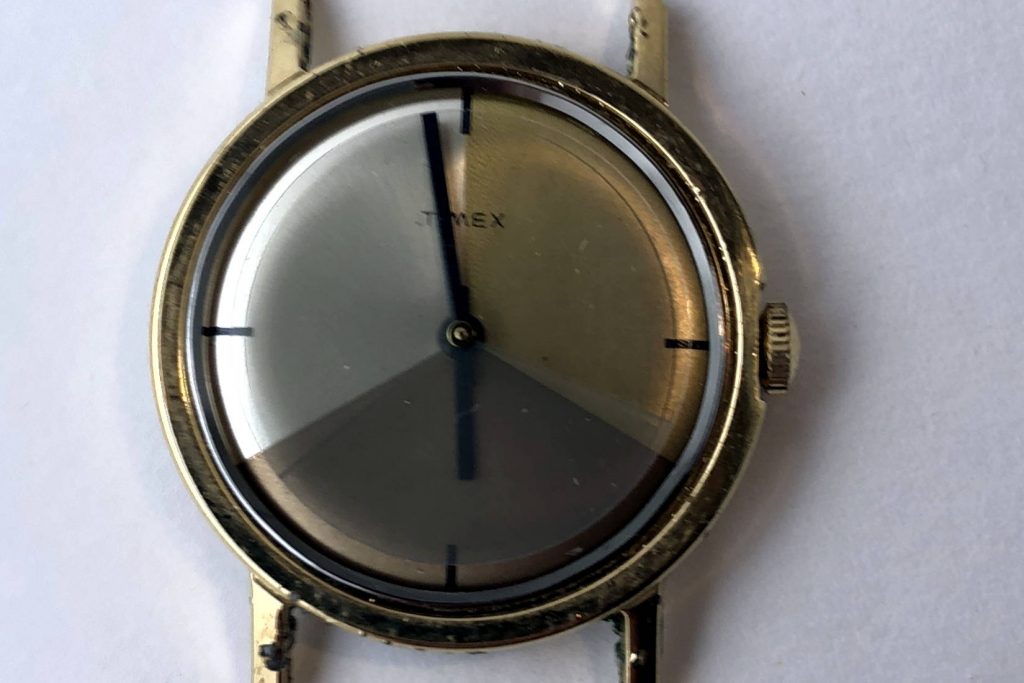
Special Editions
These pieces are something I am just learning about and I found one that is particularly interesting. This is a 70’s version, but it is very cool. The 16068 02477 Timex Kaleidoscope designed by Pakter and Krauss has a multi-colored dial with a second hand that is a pie-shaped wedge that rotates around the dial creating movement and color changes.
There are bright colored examples, but mine is a more subtle gold and silver combination. I’m awaiting a new crystal so this picture is without any acrylic.
Reading the Numbers to Identify Your Watch
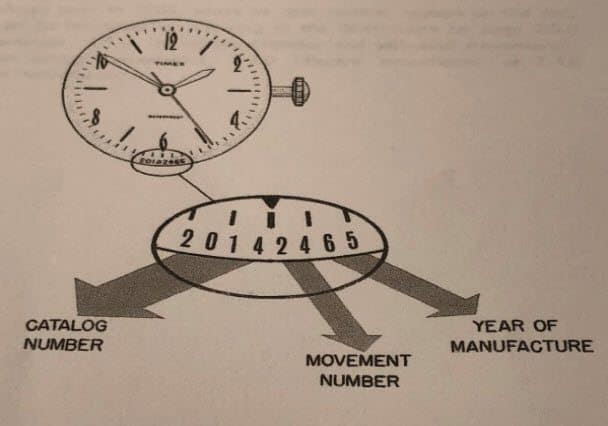
Unfortunately, I do not have a Marlin to show, but here is a different model, the Timex Viscount, that I will use for an example on how to read the model, movement, and year manufactured.
As you can see from this example, the catalog number (model number) is 2014 and the movement is 24, and finally, the year is 1965. The picture shown here is from the Timex Service Manual (page 1.1) showing what I just explained. I cannot find the Watch Identification section in the openly available PDF’s of the Timex Service Manual, but I have it from the full set I purchased on eBay.
If you find Timex before 1963 there will not be a model number or year on the dial, the repairmen of the day had to compare pictures in Chapter 4 of the Timex Service Manual (which I don’t have ) to identify the model for repair parts.
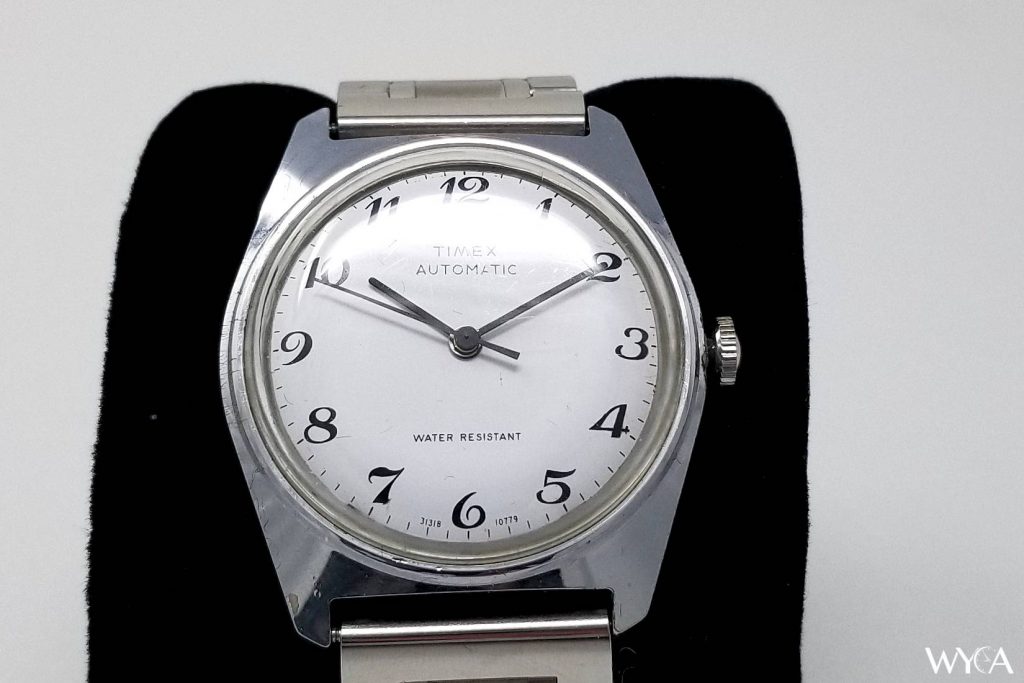
Service Manuals
Dozens of service manuals for vintage Timex auto’s are available in this Google Drive.
What to Look For When Shopping Vintage Timex Auto’s
Shopping for vintage Timex is a adventure regardless of the website you like, or if you’re hunting out in the wild at a thrift shop, yard sale, estate sale, or private seller. I am a big fan of the Timex from the 1960’s and that’s what I seek. Let’s start with eBay because that is where I find 90% of my watches either to keep, or sell.
eBay auctions are pretty predictable and the laws of supply and demand are in play. I look for specific models and I prefer unique dials as they bring a much higher resale value, but often a higher price tag.
For example, I have a number of keyword searches saved and I let eBay do the search work for me. Keywords I use are “vintage, Timex, 1960’s, Marlin, Viscount and Mercury” which are my top three models. One of my searches is for Timex cross hair dial because I think they’re sexy, and so do many buyers as there is a premium built into these unique dials.
My first search criteria other than the brand is USA product location. No offense to my Canadian friends, or those from other parts of the world, I just don’t like to hassle with international shipping, and some of the dicey areas around the world.
Next, I look for the selling method. I particularly like “Accepts Offers” because, within reason, I can control the price of the watch, and if they’re overcharging shipping, I can haggle that down as well. Even if the watch I like is in an auction, if it’s an overpriced auction, (seller overpriced the minimum bid) when the auction doesn’t get a bid, I send the seller a message offer after the auction closes. You would be surprised how many times this has worked. I don’t go insultingly low, but I think what is the resale value, and what will I put into this watch to make it viable to the next owner. Important to me is: does it run! I am not a watchmaker, or even a budding service person. I just don’t possess those skills.
When you are in an auction, do not bid until the last five seconds. The key is to select “watch” and pay attention to the item during the lead-up to the auction and see what’s going on with the bidding. Zero bids is my favorite. By bidding before the final seconds, you run the risk of bidding up something you’re interested in owning. This swooping in during an auction is no secret and all experienced eBay buyers use this strategy, so now you need to have your max bid strategy in place.
Max bidding allows the system to bid for you anywhere along the auction cycle. I set a budget for every watch, and if it goes up before the final seconds, I don’t bid, but I watch the final price because the more you know the better you perform.
For example, last night there were three Timex Marlin (real Marlins) selling and the bidding was low so far in the $20 to $40 range. I swooped in and got two of the watches for a bargain, and one got away because the price went to $70 before the last few seconds. Just to high to make money.
My final eBay tip is don’t breeze by bad pictures or watches without straps. Some sellers just don’t care what the watch looks like and they’re just cranking out postings. I love those people! I found a rust-colored dial 1965 Timex Marlin with a homemade stainless steel band that looked like garbage. Upon closer inspection, and asking the seller questions, I found it to be a true Marlin with a very scratched crystal, (see below) but not broken. It was an “Accept Offers” and “Buy it Now” for $24.99. I offered $18 and their shipping was reasonable. The offer was accepted. The watch arrived, I spent a couple hours cleaning the case, and sanding the acrylic crystal, and out popped a truly unique and beautiful watch.
I put it on a cleaned and polished twist band and at the end of the story sold it for $100 to a guy in a vintage Timex forum on Facebook.
So my gross profit from this one watch was $82 minus $3 for shipping so $79 to the good. Don’t forget eBay and PayPal fees of about $1, and shop supplies (band, polishing cloth, Polywatch, and new pins) of another $10. Net profit $68. I wish to repeat this transaction another 100,000 times!
I did mention searching “In the Wild” and this can be really advantageous if you can find the right watches. Don’t be afraid to dig, ask questions, low-ball offers, and don’t leave without the deal unless it’s above your budget.
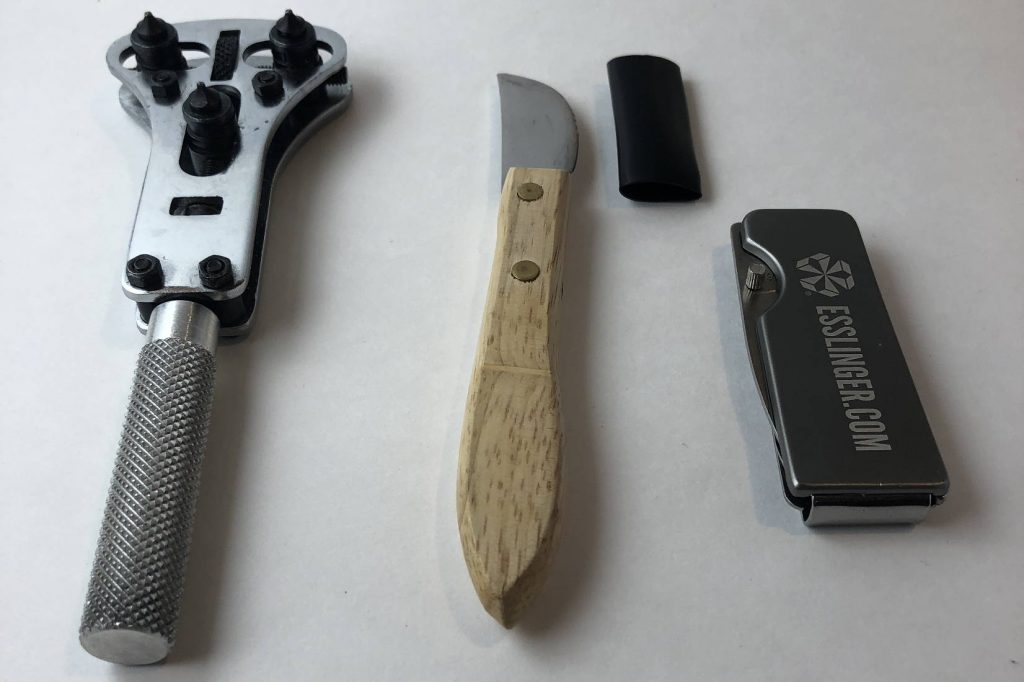
Bring a couple tools with you to yard sales, such as a small knife, and case back opening tool for both flat back cases and those that require a case wrench. Always ask the owner or estate sale staff if you can open the case back. Please be careful not to scratch or damage the watch while opening.
Pictured here are three tools purchased from Esslinger.com that I use almost every day.
Hunting and buying/reselling watches can be fun and profitable, but avoid the painful lessons discussed in this article.
Wrapping It Up
I find these automatic and manual wound mechanical watches to be quite beautiful. Many of them have sunburst dials, and look great on a lizard grain strap. I generally clean and sell the old “Twist ‘o Flex” by Speidel that you find adorning these fine pieces. The twist-band of the 60’s are just, in my opinion, ugly and they come off the watch seconds after I receive them. Many people like those old stretch bands so I clean and add them to most sales as a bonus.
Next article, I will spend a little more time on the other fine models from the 1960’s Timex line. When even a watch snob like myself can find the beauty and elegance (yes I said it) of a vintage Timex, then maybe you will take a second look at the venerable brand that “takes a licking, and keeps on ticking.”
Thanks for reading.
Contents
- What Every Vintage Timex Enthusiast Needs to Know: Models, Movements, Features, Identification Guide, & More
- Great Old Watches That Take A Licking And… You All Know The Rest!
- Wait, Timex Makes Automatics?
- Notable Timex Automatic Movements
- Hand-Wind Movements
- Desirable Vintage Timex Auto’s Worth Buying
- Unique Dials & Features
- Reading the Numbers to Identify Your Watch
- Service Manuals
- What to Look For When Shopping Vintage Timex Auto’s
- Navigating the eBay Hunting Grounds
- Wrapping It Up


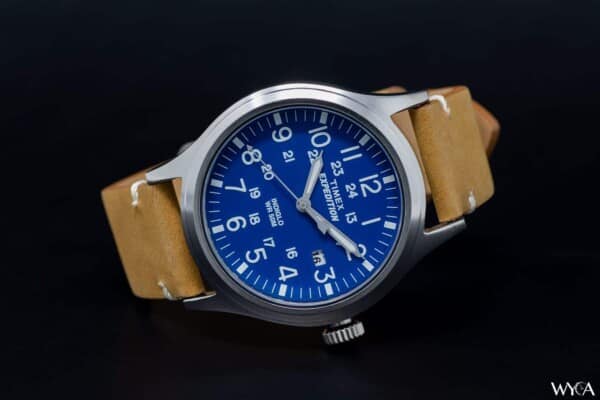

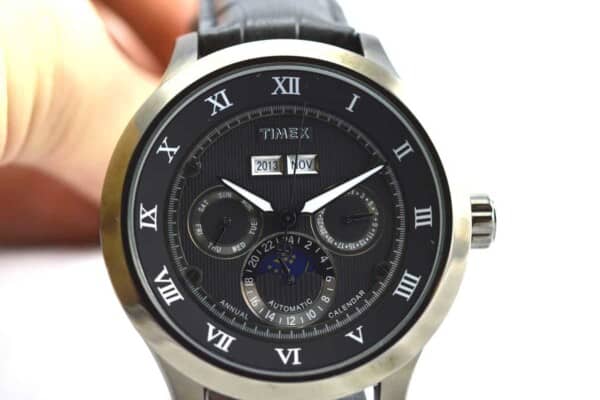
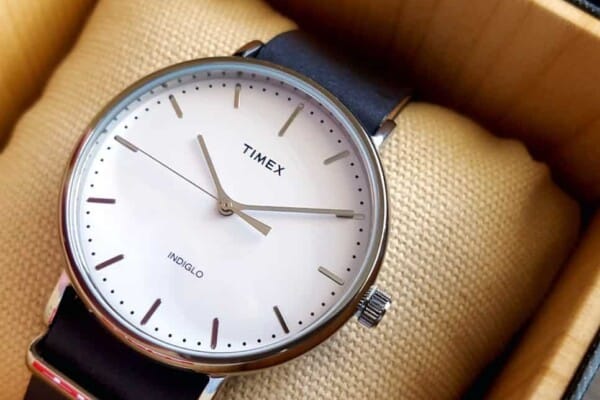
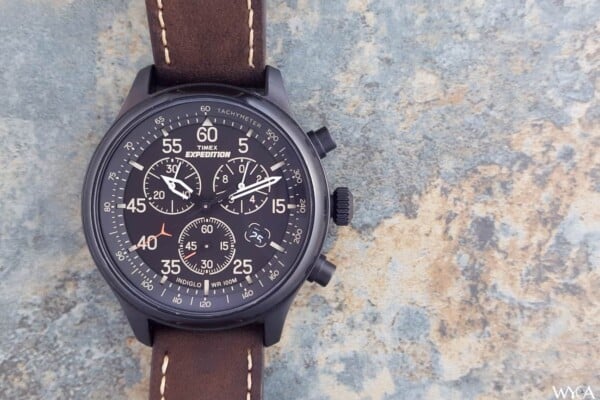
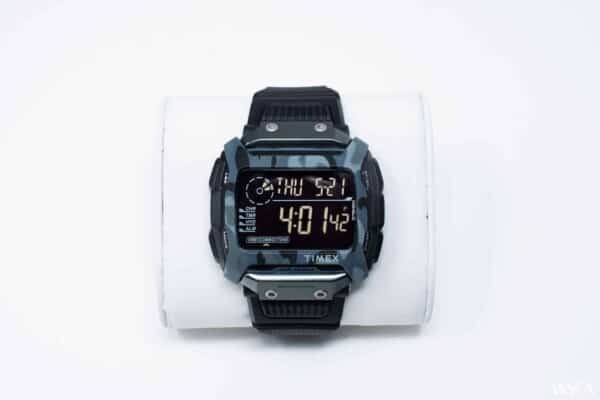
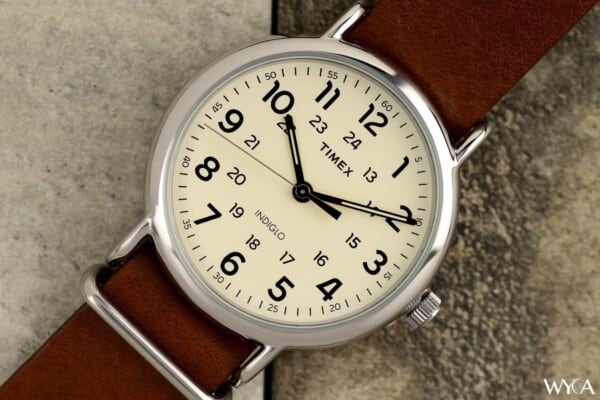
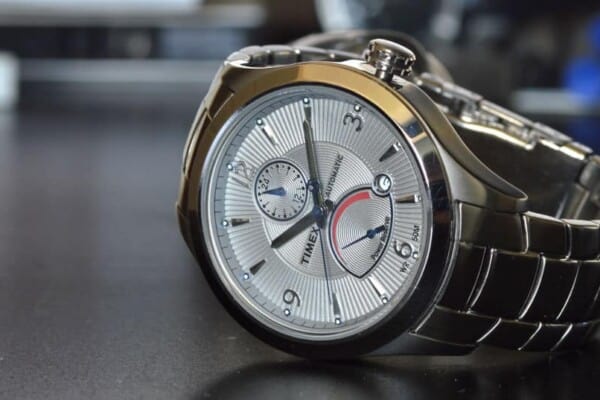
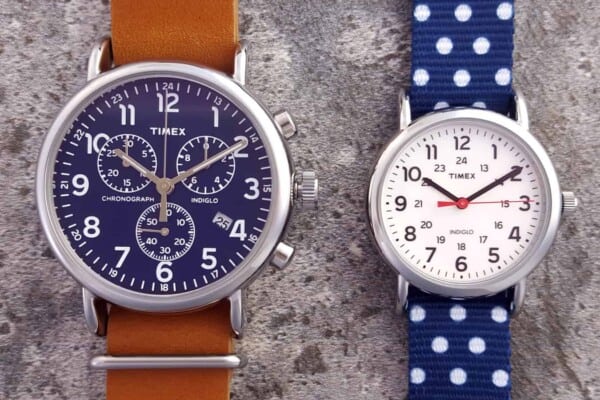

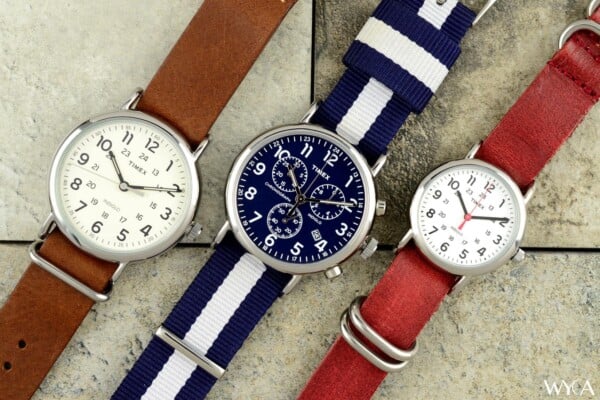
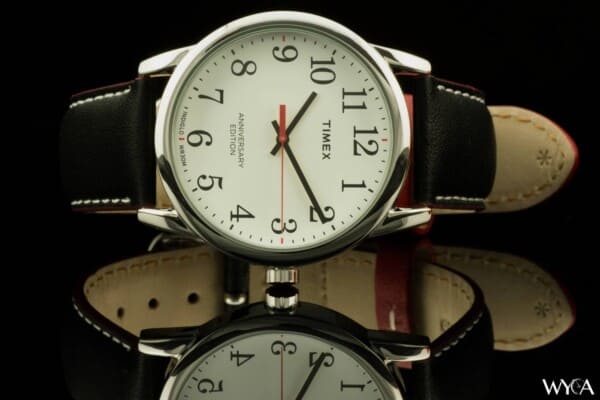
1.5
What does the number 78 on a gold tone Timex stainless steel back watch mean? Is it the model, year or something totally unrelated?
This read was extremely helpful to me as ununearthed my grandfather’s 1961/1962 Timex Viscount cross- hair self winding watch. It had no crown and had a very scratched up and broken metal twist band. I took it to a watchmaker. He cleaned and oiled the movement and installed a new crown. I added a nice speidel cordovan leather band with a nice pin buckle. I also polywatched the acrylic crystal. The champagne colored dial is stunning with a little bit of staining. It is a classic. I gravitate to it every other day at least.
THANK YOU FOR EXISTING!!!! As we say in Venezuela… look, thanks for your article, it is VERY illustrative, I am getting involved in watch collecting, I am specializing in “drawer” watches (yes… those watches that remain hidden in drawers for years or decades) my dad gave me a Vizcount when I was younger and I just found out that it is from the year 79, with a 108 movement and its catalog number is 34318, I am restoring it but it won’t work… I’ll have to buy tools to do maintenance. I have a very eclectic collection of watches, among which I have a Casio English-Spanish dictionary that I bought when I was in high school. Greetings and long life from Caracas, Venezuela
Thank you for this wonderful plethora of timex information. I’m very interested in collecting vintage mechanical watches. The timex marlin from the 1960s is what I’m hunting. What model in your opinion is the most collectable and which movement is the most desirable: the 22, 24 or the 25? Hope to hear from you soon. Thank you for your time.
I have a Timex marked on the inside caseback Apr 1954. How do you release the stem on this movement? After I get it out how do I lock it back in ? It does not have a traditional detent screw. The movement is older than the 1960’s models. Thanks
Dear sir, I wanted to ask if you knew anything about the Timex 48851 10977 it’s a beautiful mid century style and tge one I like is the one with red hands-seemingly a rare model. I saw on on eBay-and it’s unfortunately ending in a few hours, I’d love to get it but we’re literally almost broke. Can you tell me something about this watch, the value (I know it’s probably not a valuable one except to me-that’s fine, I can’t afford it anyway. But maybe I’ll be able to track down another one with red hands. These are what I remember men my fathers age wearing in the 70’s when I was a kid. I love the style. Thanks for the help, sincerely Frank
Really interesting article and my recently serviced Timex Model 32 Automatic is now singing along after I smashed it into a large lathe cluck in 1973!
FYI, the British Timex’s were made in Dundee in Scotland although they are marked “Gt. Britain”, In contrast to the Westclox’s that were made in Dumbarton in Scotland and were marked “Made in Scotland”. They are both simple pin pallet movements inside, but great watches to own.
Super article for both the novice and advanced collector!
I’m a resale hobbiest, with about 1500 watches. Everything from Timex of course, right through to your midline $2,500 business wear timepieces. My favorite to collect myself are, Timex watches! I truly don’t know why outside of the fact that I find them to be great looking for the most part, near indestructible and aesthetically are designed and crafted with master skill that appeases even us that can afford much higher priced time wear.
But, back to your paper. Well done and all inclusive. Honest and personal. Nice job!
Hey, I. Really enjoyed your article! I recently found a 1980’s Q Timex TV Dial in gold that is in great condition. Is this a good watch?
I believe I have one of the 1960’s Merlin series watches passed down to me from my grandfather I’m really not sure .
Informative read, thank you. Found old timex without band in back of a drawer. Winds and ticks, but I did not try to get day and date to work. Numbers are 16852 02776. From your article, I learned 16852 is catalog #, 02 is movement, next 7 before 76(year) represents what exactly? Thank you
Most likely the 0 is just a place holder and the model is 27. I don’t know for sure, but it seems reasonable.
I bought one today, it’s the 31 movement and it says “Case Portugal TMX, LTD.
the date is in Spanish.
I payed 40€ for it.
It’s big, square and bulky, chrome…..
Just bought one today, it’s one big brick 🧱 made in 1974 on the Portuguese Timex factory.
Number 47850 03374
Working very well
Pretty dial
Thanks for the info! I picked up a couple of Timex’s and a Waltham at a flea market I visit regularly over the weekend for $8 total. Learned a lot from you already – one timex (Electric 9417 4069) was made in 1969 and the other in 1971 (Self-Wind 46050 3171)… The Selfwind is ticking away but the electric was dismantled when I opened it up. Happy with the deal – as I got one good watch and some work to do on the others.ƒ
I have a watch that I got from my grandpa, reading this i believe it to be a 32 action. Just a couple days ago the watch stopped keeping time. I opened it and the weight is winding the spring but the rest of the action does nothing. Since this is sentimental do you know where I could send it to be repaired, I do not mind sinking some money into it. I live in Fairbanks AK and no one up here will service it. TIA
I have a 1962-63 Timex “self-winding” watch and would like to have it serviced by an official Timex member of staff as it was given to me as a engagement present!
I am now a 76yr old gentleman and wondering if anyone can help me?
I have a very old (1930s?) Timex ladies gold-plated square model, which I can’t find anywhere. The Crystal has a convex profile. How might I identify this watch?
I have a Timex watch that has no dating numerology under the “6”. The only code I can find is on the back. Under the information on the back there is a bold “T” within a box accompanied by a “D9”. It was made in the Philippines.
I wrote to Timex. They wanted information on the watch including pictures of the front and back. After I did all that, they wrote back saying they have no data on watches before 2000.
I have had this watch for a very long time. The only date chart says it was made in 1996. My guess is that this chart is at least 20 years newer. The chart’s numbering repeats every 36 years. By my guess my watch was made in 1971.
Can you help?